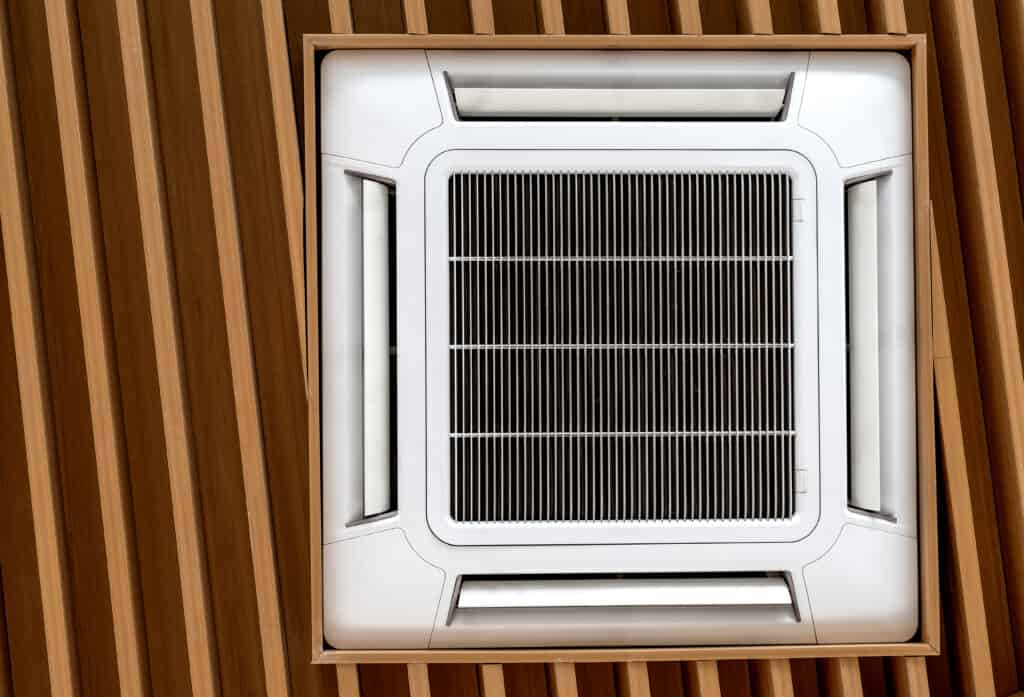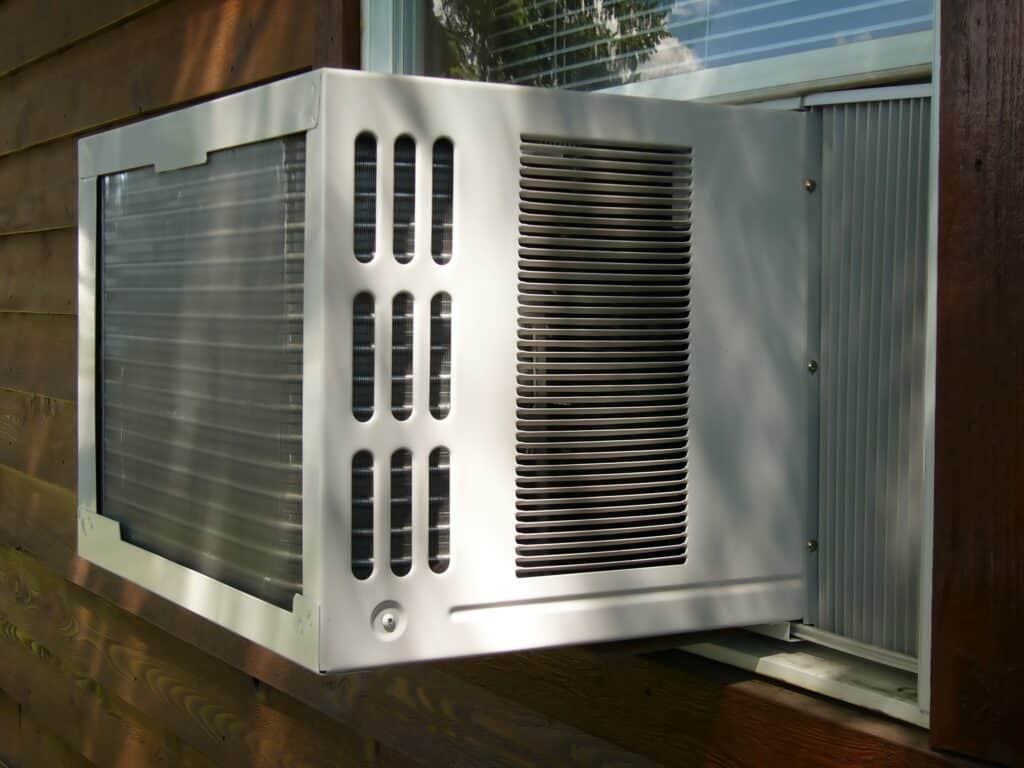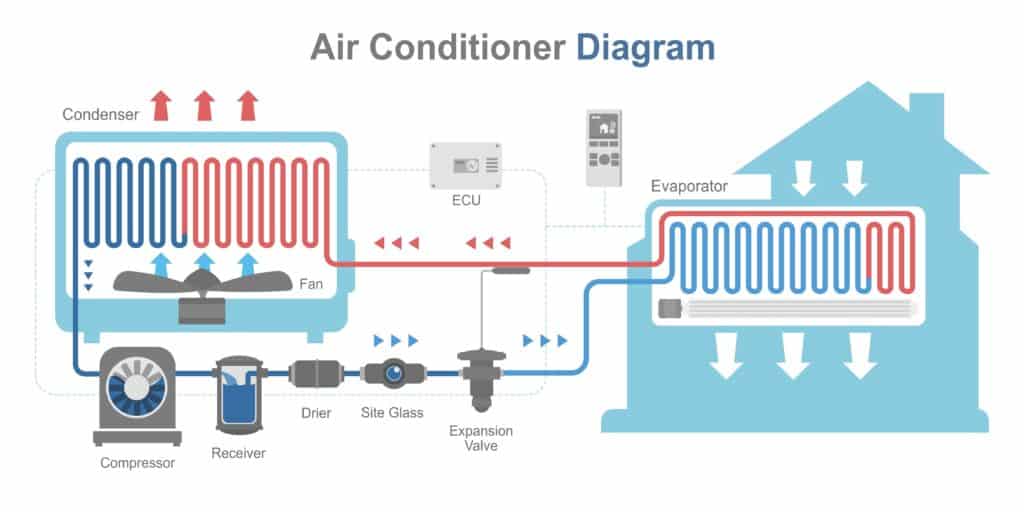Nothing is better on a hot summer day than the cool relief of an air-conditioned home (except maybe an island getaway).
Still, a fully functional air conditioning unit is easy to take for granted – unless it stops working. For most people, the idea of a malfunctioning AC can be stressful, especially when you don’t know how they operate.
Today, let’s explore how air conditioners work so that you can better diagnose potential problems when they occur and keep your system running as efficiently as possible all summer long!
Air Conditioner Background History
The concept of air conditioning dates back to ancient Egypt and Rome, where people used slatted shutters, wind catchers, and other techniques to cool their homes.
Although the first air conditioners were incredibly large and cost prohibitive, they have become more efficient and smaller over the years. Today, air conditioners use a combination of chemical refrigerants and fans to cool down a room and can be used in both home and industrial settings.
Types of Air Conditioner Units
Unlike other appliances, air conditioners come in various shapes and sizes depending on the application they are being used in.
Central Air Conditioners
Central air conditioners are commonly found in residential homes and use a two-part system to cool the entire house. This includes an outdoor unit that houses the compressor, condenser, and expansion valve, as well as an indoor evaporator coil that helps regulate the flow of cold air through ducts and vents.
Cassette Air Conditioners
Cassette air conditioners feature a recessed indoor unit installed in the ceiling and offer a discreet way to cool a room. They are often used in commercial settings such as stores, restaurants, and office buildings but can also be used in homes where wall-mounted or window air conditioners are not an option.
 Ductless Mini-Split Air Conditioners
Ductless Mini-Split Air Conditioners
Ductless mini-split air conditioners are a popular choice for homeowners who don’t have the space or budget for a centralized AC system. These units consist of one outdoor compressor unit and multiple wall-mounted indoor evaporator coils, which provide zoned temperature control to different parts of the house without requiring any ductwork.
Commercial Air Conditioners
Commercial air conditioners are larger, higher-capacity systems designed to cool large industrial buildings. These units often feature multiple compressors, evaporator coils, and advanced controls that can help manage multi-floor energy consumption.
Window Air Conditioners
Window air conditioners are small, self-contained units installed in a room’s window or wall to provide localized cooling. They are often used as supplemental cooling for single rooms or apartments and typically feature an adjustable thermostat and multiple fan speeds.
 Split Air Conditioners
Split Air Conditioners
Split air conditioners are similar to window AC units but have a more powerful cooling capacity and require professional installation. These systems consist of one outdoor compressor unit and one or multiple indoor evaporator coils and can be used either as the primary cooling system in a residential home or as a supplemental system in larger commercial buildings.
Air Conditioner Parts
While there are various types of air conditioners available, all of them use many of the same parts and components to impact the moisture and temperature of the air. Here are some of the most common parts that make up an AC system:
Evaporator Coil
Located inside the indoor unit, an evaporator coil is filled with a refrigerant and absorbs heat from the air passing over it. This cooled air then travels through ducts and vents to be released into the living area.
Compressor
The compressor is a motor in the outdoor unit that pumps the refrigerant through the entire air conditioning system. It helps to regulate both temperature and humidity levels in space.
Condenser Coil
The condenser coil is responsible for releasing the heat absorbed by the evaporator coil. This hot air is expelled outside the home or building, allowing for continuous cooling.
Expansion Valve
The expansion valve is a small device that helps regulate refrigerant flow through the AC system. Only allowing a certain amount of refrigerant to pass through helps keep the air at a consistent temperature while preventing any damage to the compressor or other parts.
Air Conditioners: How Do They Cool the Air?
Once all the parts of an air conditioner are in place, they work together to create a cooling cycle that is responsible for regulating the temperature inside the home or building.
 Here are the steps involved in a typical AC cooling cycle:
Here are the steps involved in a typical AC cooling cycle:
- Air is drawn into the indoor unit, passing over the evaporator coil and absorbing heat.
- The refrigerant inside the coil absorbs this heat and changes from a liquid to a gas form.
- The compressor then pumps the refrigerant through the condenser coil, releasing its heat outside of the home or building.
- The now-cooled air is pushed back into the indoor unit and released into the living or office area.
- The refrigerant then travels back to the evaporator coil, where the process begins again until the desired temperature is reached.
How to Keep Your AC Working at Its Best
To ensure that your air conditioning system is running as efficiently as possible, there are a few simple tips you can follow:
- Regularly Clean and Replace Filters: To keep air flowing freely, cleaning or replacing air filters is essential. This will help ensure that your system is not working harder than it needs to be and can help reduce energy costs.
- Seal Doors and Windows: To keep the cool air inside, ensure all of your doors and windows are properly sealed so that outside air doesn’t affect the temperature in your home or building.
- Install a Programmable Thermostat: Installing a programmable thermostat helps you maintain comfortable temperature levels when people are occupying the home or office while automatically shutting off the system when not needed.
- Invest in Regular Maintenance: Regularly scheduled maintenance helps to make sure your air conditioner continues to operate at optimal performance. Working with a professional HVAC technician can prolong the life of your system and help you avoid higher energy consumption costs.
Air Conditioning Maintenance
Maintaining your AC system is crucial to keeping it running at peak performance. Professional technicians like Bell Brothers can spot potential issues, make the necessary repairs or replacements, and provide valuable advice on how to maximize its longevity.
Scheduling AC maintenance today will ultimately save you a lot of expenses (and really sweaty, uncomfortable days) in the future.
Everyone Signed “Stay Cool” In Our Yearbooks
Ok, maybe we’re not that cool, but our AC technicians will keep you cool! Call the Bell Brothers and schedule your AC maintenance today!

